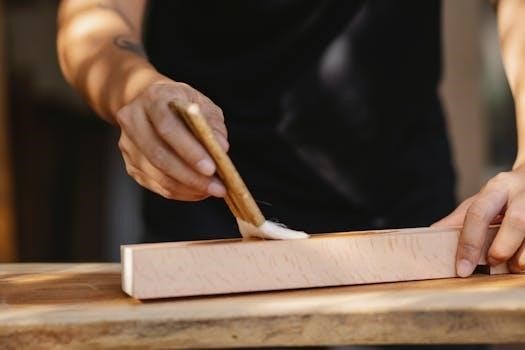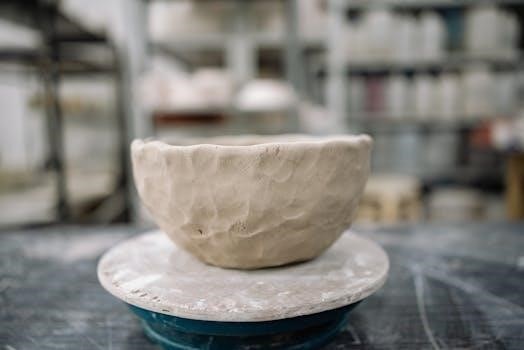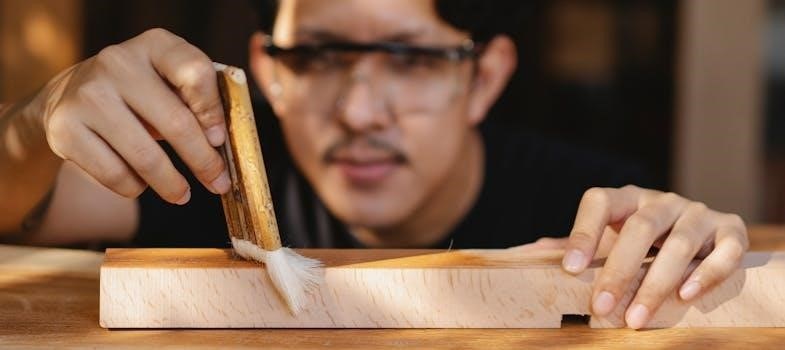Welcome to the world of convenient ice making with your Igloo ice maker! This guide provides essential information for operating and maintaining your appliance‚ ensuring years of reliable ice production․
Understanding the Basics of Igloo Ice Makers
Igloo ice makers offer a convenient solution for producing ice at home or in small office settings․ These appliances work by automatically freezing water and dispensing ice cubes into a collection bin․ Understanding the core components and operational principles is crucial for optimal use․
The primary components include a water reservoir‚ a freezing mechanism (often utilizing refrigerant)‚ a cube-forming tray‚ and an ice storage bin․ The ice maker draws water from the reservoir‚ freezes it into cubes‚ and then releases the cubes into the storage bin․ A sensor typically monitors the ice level in the bin‚ automatically stopping ice production when full․
Several factors can affect ice production‚ including ambient temperature‚ water temperature‚ and the chosen ice cube size setting (if adjustable)․ A warmer environment or warmer water may slow down the freezing process․ Regular cleaning and maintenance are vital to prevent mineral buildup and ensure efficient operation․ Familiarizing yourself with these basics will lead to better performance and a longer lifespan for your Igloo ice maker․

Initial Setup and Preparation
Proper setup is crucial for optimal performance․ This section guides you through unboxing‚ component identification‚ and connecting your Igloo ice maker to a power source and a water supply․
Unboxing and Component Identification
Carefully unbox your new Igloo ice maker․ Remove all packaging materials․ Retain the original box and packing materials for potential future transport or storage․ Inspect all components for any signs of shipping damage․ Contact customer support immediately if any damage is found․
Identify the main components․ You should have the ice maker unit itself‚ an ice basket or bin‚ an ice scoop‚ and the instruction manual․ Some models may include additional accessories such as a water filter or a drain plug․ Familiarize yourself with each component and its function as described in this manual․
Check for any missing parts against the included parts list․ If any parts are missing‚ contact the manufacturer or retailer for assistance․ Do not attempt to operate the ice maker until all parts are accounted for and properly installed․
Proper component identification is key to a smooth setup process․ Take your time and ensure you are familiar with each part before proceeding to the next step․
Connecting to Power and Water Supply
Before connecting your Igloo ice maker‚ ensure the voltage matches your local power supply․ Use a dedicated‚ grounded outlet․ Avoid using extension cords․ Ensure the power switch is in the “OFF” position before plugging in the unit․ Connecting to an incorrect voltage can damage the ice maker․
If your model requires a direct water line connection‚ follow these steps carefully․ Locate the water inlet on the back of the unit․ Connect a potable water supply line using the appropriate fittings‚ usually a ¼-inch compression fitting․ Ensure the water line is free of kinks and leaks․ A water filter is recommended to improve ice quality․ Consult a qualified plumber if needed․
For models with a water reservoir‚ fill the reservoir with clean‚ potable water․ Do not overfill․ The water level should be below the maximum fill line․ Using distilled or filtered water is recommended for optimal ice clarity and to prevent mineral buildup․
Once the power and water supply are connected‚ double-check all connections for leaks before proceeding․

Operating Instructions
This section details the steps for operating your Igloo ice maker․ Learn how to start the ice-making process and adjust settings for your desired ice cube size․
Starting the Ice Making Process
Now that your Igloo ice maker is properly set up‚ you’re ready to begin making ice! Ensure the unit is connected to a functioning power outlet and that the water reservoir is filled to the maximum fill line‚ using potable water․ This is critical for optimal performance․
Next‚ locate the power button‚ usually found on the front control panel․ Press the power button to turn the ice maker on․ The indicator light will illuminate‚ signaling that the unit is active․ Select your desired ice cube size‚ if applicable‚ using the size selection button․
The ice-making cycle will now commence automatically․ The unit will draw water from the reservoir and begin freezing it into ice cubes․ The duration of each cycle will depend on the selected ice cube size and the ambient temperature․ The first batch of ice may be discarded․
Once the ice cubes are formed‚ they will be automatically released into the ice bin․ Monitor the ice level in the bin․ When the bin is full‚ the ice maker will automatically pause the ice-making process until ice is removed․
Adjusting Ice Cube Size (if applicable)
Some Igloo ice maker models offer the flexibility to customize the size of the ice cubes produced․ If your model is equipped with this feature‚ you can adjust the ice cube size to your preference․ Locate the ice size selection button on the control panel; it is typically indicated by symbols representing small‚ medium‚ and large ice cubes․
Press the ice size selection button to cycle through the available size options․ Each press will usually correspond to a different ice cube size․ The indicator light next to the selected size will illuminate‚ confirming your choice․ The ice maker will then produce ice cubes according to your chosen setting․
Keep in mind that smaller ice cubes will typically be produced more quickly than larger ones․ Experiment with different sizes to find the setting that best suits your needs․ Please be aware that not all models have this function‚ so consult your specific model’s manual․

Troubleshooting Common Issues
Encountering problems with your Igloo ice maker? This section addresses common issues and provides solutions to help you get your ice maker back up and running smoothly․
Ice Maker Not Producing Ice
If your Igloo ice maker isn’t producing ice‚ several factors could be the cause․ First‚ verify that the unit is properly connected to a power source and that the outlet is functioning correctly․ Check the water supply line to ensure it’s connected securely and that the water valve is fully open․ Insufficient water pressure can prevent ice production․
Next‚ examine the freezer temperature․ The ice maker requires a sufficiently cold environment to operate effectively․ Adjust the freezer temperature according to the manufacturer’s recommendations‚ typically around 0-5 degrees Fahrenheit (-18 to -15 degrees Celsius)․ A freezer that is too warm will hinder ice formation․
Inspect the ice maker’s components for any obstructions․ Frozen water lines or a jammed ice ejector can prevent ice production․ Defrost the unit if necessary and clear any ice buildup․ If the problem persists‚ consult a qualified technician for further assistance․ Regularly cleaning the ice maker can also prevent future issues․
Ice Cubes Too Small or Too Large
Inconsistent ice cube sizes from your Igloo ice maker can indicate a few potential issues․ If the ice cubes are consistently too small‚ it often points to low water pressure․ Ensure that the water supply line is fully open and that there are no kinks or obstructions restricting water flow․ Insufficient water entering the ice maker results in smaller cubes․
Conversely‚ if the ice cubes are too large or fused together‚ it could be due to a malfunctioning thermostat or temperature sensor․ These components regulate the freezing cycle‚ and if they are not functioning correctly‚ the ice maker may overfreeze the water‚ resulting in oversized or clumped-together cubes․
Some Igloo ice maker models have adjustable settings for ice cube size․ Consult your user manual to determine if your model has this feature and adjust the settings accordingly․ If the problem persists despite adjusting the settings or addressing water pressure issues‚ consider contacting a qualified appliance technician for further diagnosis and repair․

Cleaning and Maintenance
Regular cleaning and maintenance are crucial for optimal performance and longevity of your Igloo ice maker․ This section outlines the recommended procedures for keeping your ice maker clean and efficient․
Regular Cleaning Procedures
Maintaining a clean Igloo ice maker is paramount for producing fresh‚ uncontaminated ice․ Consistent cleaning prevents the build-up of mineral deposits‚ mold‚ and bacteria‚ ensuring optimal performance and prolonging the appliance’s lifespan․ Before initiating any cleaning procedure‚ always disconnect the ice maker from the power source to prevent electrical hazards․
For routine cleaning‚ wipe down the interior and exterior surfaces with a soft cloth dampened with a mild detergent solution․ Pay close attention to the ice storage bin‚ as it can accumulate condensation and ice fragments․ Empty the bin completely and wash it with soapy water‚ rinsing thoroughly before reassembling․
The water reservoir should also be cleaned regularly to prevent algae growth and mineral build-up․ Drain the reservoir and wipe it clean with a soft cloth․ For a more thorough cleaning‚ use a solution of equal parts water and white vinegar․ Allow the solution to sit in the reservoir for several minutes before rinsing thoroughly with clean water․ Ensure all components are completely dry before reassembling the ice maker․
Descaling the Ice Maker
Over time‚ mineral deposits from hard water can accumulate inside your Igloo ice maker‚ hindering its performance and potentially causing damage․ Descaling is the process of removing these mineral build-ups‚ ensuring efficient ice production and prolonging the appliance’s life․ The frequency of descaling depends on the water hardness in your area; however‚ it is generally recommended every 1-3 months․
To descale your ice maker‚ use a commercially available descaling solution specifically designed for ice makers‚ or a mixture of white vinegar and water (1⁚3 ratio)․ Follow the manufacturer’s instructions for the descaling solution‚ or pour the vinegar solution into the water reservoir․
Run the ice maker through several ice-making cycles with the descaling solution in the reservoir‚ discarding the ice produced․ After completing the cycles‚ drain the reservoir and thoroughly rinse it with clean water․ Run several more ice-making cycles with fresh water to ensure all traces of the descaling solution are removed before resuming normal ice production․ Regular descaling will keep your Igloo ice maker functioning optimally․
